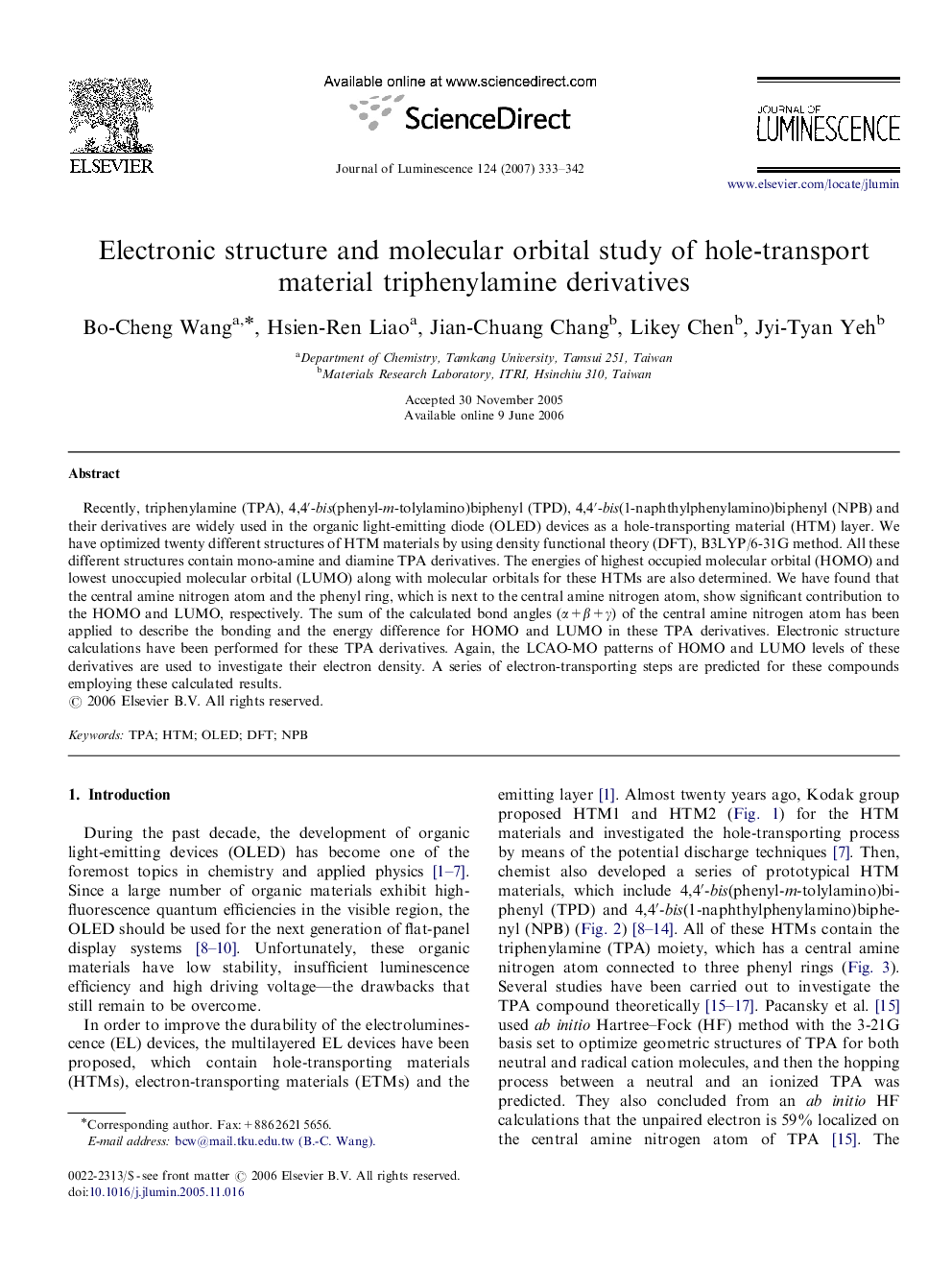| Article ID | Journal | Published Year | Pages | File Type |
|---|---|---|---|---|
| 5404256 | Journal of Luminescence | 2007 | 10 Pages |
Abstract
Recently, triphenylamine (TPA), 4,4â²-bis(phenyl-m-tolylamino)biphenyl (TPD), 4,4â²-bis(1-naphthylphenylamino)biphenyl (NPB) and their derivatives are widely used in the organic light-emitting diode (OLED) devices as a hole-transporting material (HTM) layer. We have optimized twenty different structures of HTM materials by using density functional theory (DFT), B3LYP/6-31G method. All these different structures contain mono-amine and diamine TPA derivatives. The energies of highest occupied molecular orbital (HOMO) and lowest unoccupied molecular orbital (LUMO) along with molecular orbitals for these HTMs are also determined. We have found that the central amine nitrogen atom and the phenyl ring, which is next to the central amine nitrogen atom, show significant contribution to the HOMO and LUMO, respectively. The sum of the calculated bond angles (α+β+γ) of the central amine nitrogen atom has been applied to describe the bonding and the energy difference for HOMO and LUMO in these TPA derivatives. Electronic structure calculations have been performed for these TPA derivatives. Again, the LCAO-MO patterns of HOMO and LUMO levels of these derivatives are used to investigate their electron density. A series of electron-transporting steps are predicted for these compounds employing these calculated results.
Related Topics
Physical Sciences and Engineering
Chemistry
Physical and Theoretical Chemistry
Authors
Bo-Cheng Wang, Hsien-Ren Liao, Jian-Chuang Chang, Likey Chen, Jyi-Tyan Yeh,
